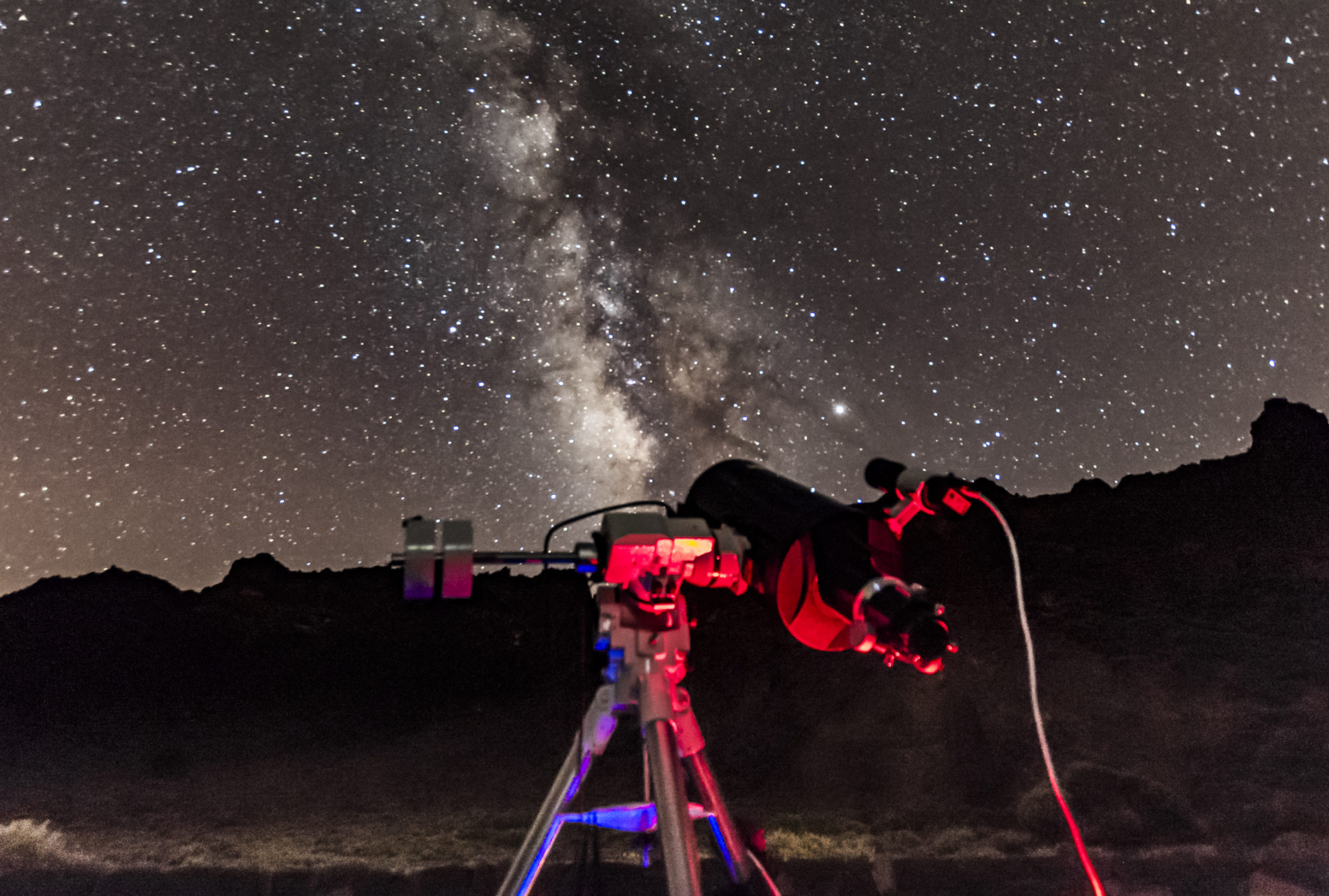Are you planning to book a telescope observation experience? Whether you’re a first-time stargazer or a seasoned astronomy enthusiast, choosing the right tour can make all the difference. With the growing popularity of stargazing tourism, it’s essential to know what factors to consider before booking. In this guide, we’ll cover the key elements that will help you select the perfect astronomy experience.
1. Location: Dark Skies Matter
The quality of your stargazing experience depends heavily on the observation site’s location. Look for areas with minimal light pollution, such as national parks, remote mountain ranges, or islands with designated dark-sky reserves. In this context, consider the full Moon as light pollution too. The islands of Tenerife and La Palma are among the best places in Europe and the world for stargazing. These islands offer clear skies for amateurs and host professional observatories at altitudes of 2400 m.
2. Equipment Quality: More Than Just a Telescope
Not all telescopes offer the same experience. High-quality optics and well-maintained equipment can reveal deep-sky objects, planets, and lunar details in stunning clarity. However, bigger isn’t always better when it comes to telescopes. While large telescopes can capture more light, atmospheric conditions limit their practical use in amateur stargazing tours. Quality observations are done with 8 to 16 inches telescopes, balancing resolution, light-gathering power, and portability. Anything larger often suffers from air turbulence effects, reducing image clarity. Ensure the tour provides a well-maintained telescope with high-quality optics. Check whether the experience includes:
- Large aperture telescopes, but not too big.
- Professional-grade mounts for stability.
- Additional tools like star maps and laser pointers for sky navigation.
3. Expertise of the Guide: Learning from the Best
A knowledgeable guide can elevate your observation session from a simple sky-gazing moment to an educational experience. Looking through a telescope is not just an action, it is a full educational insight into the nature of reality. It can without doubt change the way you feel in the Universe. Choose tours led by professional astronomers or well experienced guides, who can explain celestial events in an engaging way. Ensure the guide has the ability to adapt to beginners or advanced stargazers. A knowledgeable and experienced guide can make or break your experience.
4. Timing and Season
Depending on the time of year and location, different celestial objects will be visible. Planets, star clusters, nebulae, and galaxies all have different visibility windows along the year. A good tour adjust the content based on seasonal highlights. Among these highlights, you can consider:
- Moon Phases: A full moon can wash out faint celestial objects, while a new moon provides the darkest skies. Seeing the Moon on a telescope is surely the best experience. But the Moon will also limit the contrast of the night and it makes difficult to watch faint targets.
- Meteor Showers: Booking during events like the Perseids or Geminids can enhance your experience. The Moon is also key for showers, since most faint meteors will not be visible under moonlight conditions.
- Planet Visibility: Check whether planets like Jupiter, Saturn, or Mars will be visible during your visit. They are not always visible, but they definitively enrich a good stargazing and telescope observation.
5. Group Size and Experience Type
Would you prefer a private session, a small group experience, or a large public tour? Smaller groups often offer more telescope time and a more intimate experience. In contrast, large tour groups mean long waits for telescope time and gathering little knowledge from the guide. A good thumb rule: 10 people per telescope is a reasonable top limit for a high quality experience.
6. Weather Conditions, Reviews and Testimonials
Clear skies are essential for a successful telescope experience. Before booking, check if the tour provider has a flexible cancellation or rescheduling policy for cloudy nights. When weather is unstable, flexibility is always a plus, avoding always alternative indoor presentations.
Before booking, check online reviews from previous guests on platforms like Google, Airbnb, or GetYourGuide. Pay attention to comments involving:
- Guide knowledge and hospitality
- Telescope quality and visibility
- Overall experience satisfaction
Final Thoughts
Choosing the right telescope observation experience ensures you make the most of your stargazing adventure. A telescope tour can be a magical experience if you choose wisely. Prioritize location, telescope quality, guide expertise, and group size when making your decision. Whether you’re a casual stargazer or an astronomy enthusiast, a well-planned tour will leave you with unforgettable cosmic memories.
Are you ready to embark on an unforgettable astronomy journey? Are you ready to gaze into the universe? Choose your telescope tour wisely and embark on a journey through the stars!




